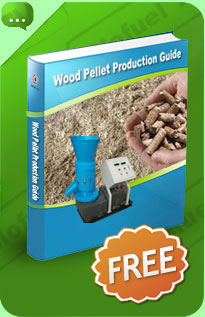Pellet Mill Small
Pellet mills come in various different shapes and sizes, including pellet mill small. There are various different designs of pellet mills, and some are more common than others in the design of pellet mill smalls. Also the size of the pellet mill can influence its ability to process various raw materials. Therefore a pellet mill small can struggle to produce pellets out of certain materials, particularly high density materials, such as wood pellets and particularly hardwood pellets.
Conditioning and Power Requirements
The reasons most pellet mill small struggle to produce wood pellets, is they lack sufficient power to compress the wood, and they also do not generate sufficient heat to melt the wood. As wood is a much harder material than grass for example, either more power is required in terms of a larger motor, or a lower gearing. Wood melting is crucial to the pellet process and pellet binding. Wood melts at a much higher temperature than grass, and the friction generated in a small mill is usually insufficient to reach the required temperatures. Larger pellet mills have a larger contact area, which generates more friction, and thus heat. Also large pellet machines usually have steam conditioners to raise the temperature of the wood fiber before it enters the pellet mill for compression.
Flat Die Pellet Mills Have Their Limits
There are two core principle designs of pellet mills, which is either a flat die or ring die design. Flat die pellet mills work on a vertical process design, with raw material entering from above and dropping down into the process area. The die is horizontal, with a set of rollers rotating across the surface. As the raw material falls from above, the rollers compress the material through the die in a vertical motion. Flat die pellet mills are a much more popular design for pellet mill smalls, mainly due to the fact they are mass produced in China. However the quality of these pellet mill smalls is very low, and many have experienced issues.
Ring Die Pellet Mills Are the Best Option
Ring die pellet mills work in a different manor to flat die pellet mills. In a ring die pellet mill the die encompasses the rollers, hence the 'ring' description. The rollers apply pressure to the inner surface of the die, compressing material through the outer surface of the die. Material is forced fed horizontally into the centre of the ring, Pellets then fall vertically away from the ring. Small ring die pellet mills do exist, however they are not as popular due to their more complicated design and higher costs. However ring die pellet mills do have certain benefits over flat die pellet mills.
Current Pellet mill smalls On Sale
As previously stated the majority of pellet mill small on the market today fall short of the quality expected by most western consumers. At BiofuelTech we have owned several small flat die pellet mills, and we know how difficult they are to operate. For example in much of the promotional material you see the demonstrator filling the hopper on the pellet mill, and the unit happily making pellets. However this raw material is actually a very soft low density material that is very easy to make low density pellets from. If you try that same process with sawdust, you will soon see the pellet mill amps shoot up and the motor will stall.

